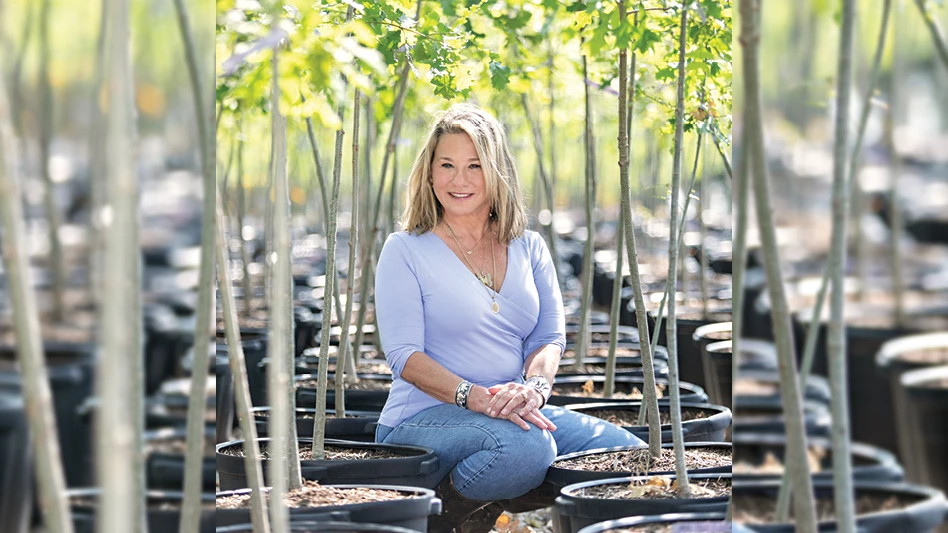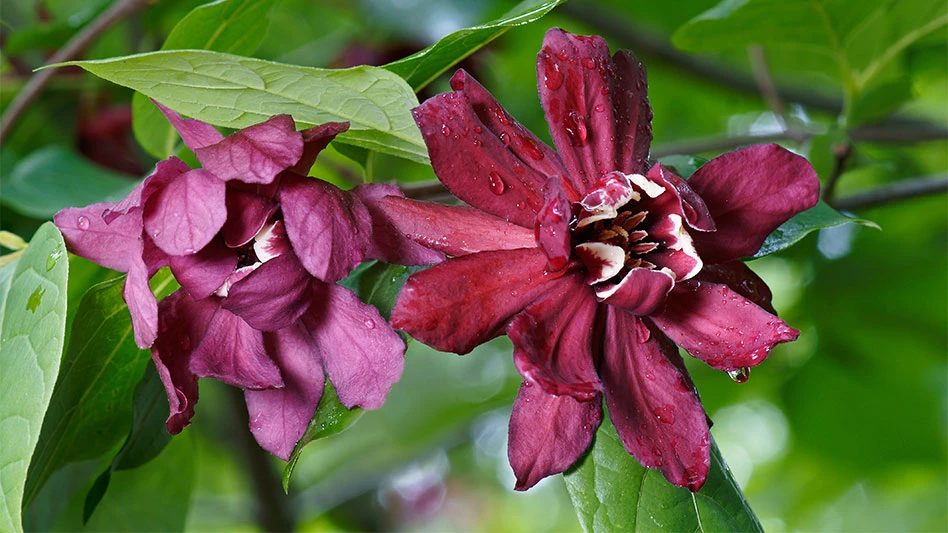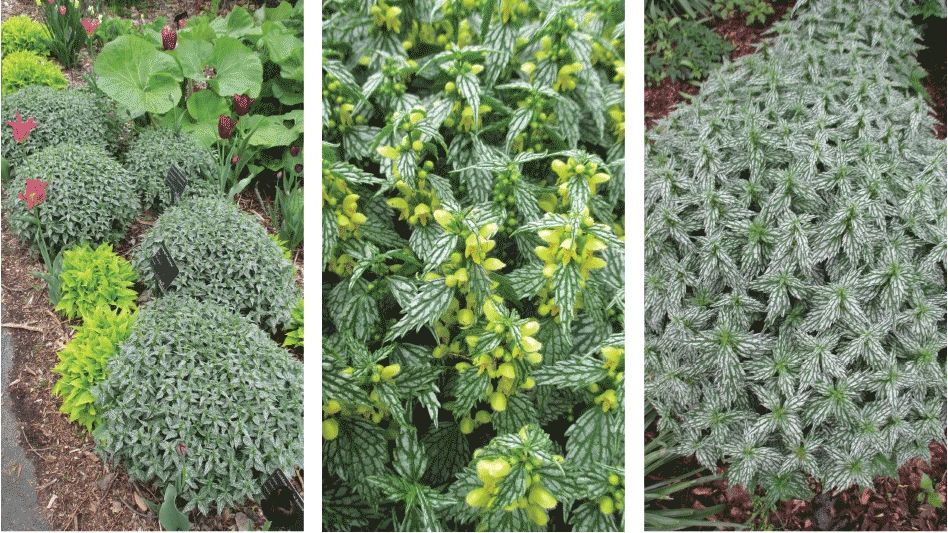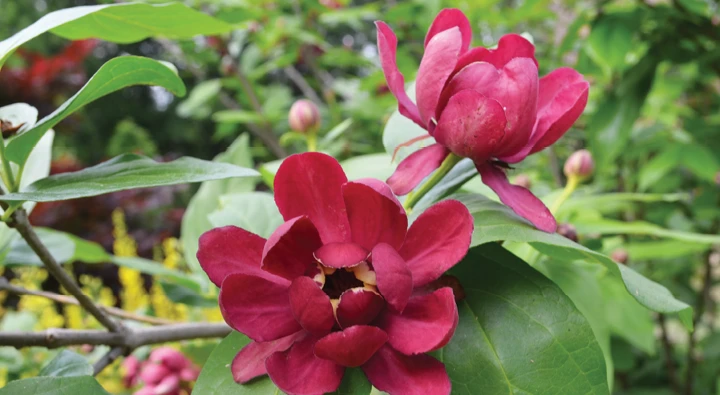
_fmt.png)
Calycanthus sp. is a wonderful native shrub which has never garnered significant commercial traction, however, the hybrids with C. chinensis, C. x raulstonii ‘Aphrodite’, ‘Hartlage Wine’, ‘Venus’, ‘Solar Flare’, and the 2018 introduction ‘Dark Secret’, have piqued enthusiasm and sales. More on the hybrids later.
In the 1990s, our University of Georgia program sourced every C. floridus taxa available with ‘Michael Lindsey’, ‘Edith Wilder’, and ‘Athens’ (yellow) proving the most fragrant. ‘Michael Lindsey’ was introduced by Allen Bush of North Carolina’s Holbrook Farm and Nursery. The foliage is glossy dark-green, turning a pretty soft-yellow in autumn, and the most sun and heat tolerant of all trialed. The foliage of ‘Edith Wilder’ is matte green, turning yellow-green in full sun. ‘Athens’ (yellow flowers) foliage is glossy green and at its best when sited in partial shade. I believe it is the most fragrant of all. Through the years many seedlings of ‘Michael Lindsey’ and ‘Athens’ were grown to flowering. A few yellow flowers resulted from ‘Athens’ but nothing with better fragrance. ‘Michael Lindsey’ seedlings inherited the beautiful foliage but no improved fragrance. My advice when purchasing a sweetshrub, particularly seed-grown material, is to smell first. It’s worth noting that Calycanthus taxa are deer resistant, possibly predicated on the spicy odor of the stems and leaves. The seeds (achenes) contain an alkaloid with a strychnine-like mode of action which can be toxic to cattle.
The species is common as an understory plant on slopes and hillsides where it suckers and forms extensive colonies. Often open and unkempt in habit in the wild, plants in the gardens are more restrained, mounded, reaching 6-10 feet high and wider at maturity. The native range extends from western Massachusetts to Illinois, south to Florida and Mississippi, however, plants grow far north of the native range with specimens at the Minnesota Landscape Arboretum and the University of Maine Lyle E. Littlefield Ornamentals Trial Garden. I rate the species adaptability to Zones 4-9.
Foliage is variable from dull matte green to lustrous dark green with a smooth to textured (bullate) surface. The yellow fall color can be magnificent and huge colonies on the Georgia campus are often a regal yellow-gold in late November to early December.
Flowers — shades of red-purple, maroon, to dark red-brown — are ¾ inches across, larger when fully open. They are composed of numerous tepals (petals and sepals which are similar in shape), developing from the nodes often before the leaves and continuing to full leaf maturity in April (Athens). Sporadic flowers occur on later shoot growth. Peak fragrance is evident when the tepals start to open water-lily like. The warmth of a spring day, especially the afternoon, intensifies the fragrance. Flowers are never knockout showy like the hybrids, but beautiful on close inspection. The achene fruits develop in an urn-shaped, leathery gray-brown receptacle, each fruit (often termed a seed) is shiny brown with a hard coat. The structure persists into the following year and can be found among the new foliage of spring. The flowers are pollinated by beetles and according to the UGA Entomology Department, sap beetles (Nitidulidae) are especially important pollinators for Calycanthus spp. Nitidulidae is a large and diverse group with multiple species of Carpophilus and Colopterus the most important pollinators.
In 2017 I acquired f. purpureus (var. purpureus) from Pleasant Run Nursery (PRN), New Jersey. I first observed the plant at Hillier Arboretum in 1999. Germplasm Resources Information Network (GRIN) does not recognize it as a legitimate taxon and lumps it with the species. However, f. purpureus has a purple, almost lavender-purple, lower leaf surface. The coloration holds through the entire growing season. The leaves turn amber-gold in autumn, the purple still evident on the lower surface. The foliage color persisted in Georgia and is the equal of ‘Michael Lindsey’ for heat and sun tolerance. Rich Hesselein and Daryl Kobesky, PRN, bred ‘Burgundy Spice’ from f. purpureus. It has magnificent glossy, deep maroon, textured foliage with reddish-maroon flowers (minimal fragrance). ‘Burgundy Spice’ is at home in full sun and half-shade, the foliage color more persistent in the latter. Even in sun, color is long persistent, eventually turning dark green with a maroon hue. Each new growth flush is rich maroon. Fall color is a rich yellow, orange or amber. The breeders cite size as 8 feet by 6 feet. The plant received over-the-top kudos during the 2017 Southern Region IPPS meeting when Dr. Dave Creech showcased a 6-foot high plant in the Mast Arboretum at Stephen F. Austin University.
The introduction of the rare C. chinensis (Chinese sweetshrub) in the early 1980s proved a game changer for breeders, particularly Dr. Tom Ranney and Richard Hartlage at North Carolina State University. The Flora of China describes its habitat under trees, near streams in mountainous areas at 2,000-4,000 feet elevation. Most literature ascribes height from 3-9 feet. We now know better, with 10-15 feet high being more realistic, when observed in gardens. Habit is upright spreading with large coarse stems, splaying in varied directions. Foliage is larger and coarser than C. floridus, glossy medium green, with yellow fall color, and at its best in partial shade. The waxy, non-fragrant flowers, 2-3 inches diameter, are white-pink on the outer tepals, yellow on the inner, with purple streaks at the base. They open after C. floridus in May-June when the leaves are fully developed. The species is cold tolerant to Boston and heat tolerant to Savannah.
In 2017 I acquired f. purpureus (var. purpureus) from Pleasant Run Nursery (PRN), New Jersey. I first observed the plant at Hillier Arboretum in 1999.” – Michael A. Dirr
Hat-tip to the hybrids
The first hybrid was constituted by Richard Hartlage, an undergraduate student at NCSU in 1991. Four seedlings resulted, one of which appeared to be a hybrid, which became ‘Hartlage Wine’. Its 3-inch diameter red-maroon, yellow centered flowers open in April and are effective for ~four weeks in Athens. Flowers are described as subtly fragrant but I sense little. They are occasionally produced on new growth. The plant is effectively sterile but I have observed a few fruits. Plants show hybrid vigor, reaching 8 feet in four to five years. It has not been as vigorous as ‘Aphrodite’ in our garden. Visitors to the Dirr garden are smitten by the floral display and, not surprisingly, completely ignorant about the identity.
Dr. Ranney bred ‘Venus’ using C. floridus, C. occidentalis and C. chinensis, with fragrant, 3- to 4-inch diameter white flowers opening from creamy yellow, egg-shaped buds. The open flower resembles Magnolia stellata (star magnolia). Although beautiful, a petal (tepal) spot is somewhat disfiguring. This spotting is common to ‘Athens’, one of the parents. Foliage is glossy medium green and soft yellow in fall. Habit is rangy at 6-8 feet high and wider at maturity. Peak flowering period is May-June. I have not observed fruits. Hardiness may be less than ‘Hartlage Wine’ since C. occidentalis, the California species, is involved. However, the latter two taxa and ‘Venus’ are growing at the Morton Arboretum in Lisle, Ill.
_fmt.png)
‘Aphrodite’ is another of Dr. Ranney’s hybrids, similar to ‘Hartlage Wine’ and marketed as fragrant. In truth, I cannot pick up much of a scent. ‘Aphrodite’ and ‘Hartlage Wine’ are within 40 feet of each other in the Dirr garden and it is difficult to separate them without a label. However, ‘Aphrodite’ flowers two to three weeks later – in late April to late May on a consistent basis. At Coastal Maine Botanical Garden in Boothbay, Maine, ‘Aphrodite’ flowers in July and produces copious quantities of fruit, although marketed as sterile.
‘Solar Flare’ is offered by Song Sparrow Nursery of Wisconsin, and, to date, the lone plant in the Dirr garden is not as vigorous as ‘Aphrodite’ and ‘Hartlage Wine’. The flower color is similar, but the flowers are not as large, averaging 2½ inches wide. Fragrance is listed as fruity like C. floridus, but I was unable to detect this. It may require a couple of seasons to show its true worth. The original plant came from the late Dennis Ledvina, a prominent breeder of magnolias. The parentage is the same as ‘Hartlage Wine’ and described as growing 6-9 feet high and wide.

‘Dark Secret’ is a 2018 introduction from Broken Arrow Nursery in Hamden, Conn., involving the same parents as ‘Hartlage Wine’. The 3-inch diameter flowers are rich burgundy red on the outside and contrast with the near white inner tepals. Estimated size is 10-15 feet high. My first plant arrived in November 2018, thus no concrete facts yet to report.
Consistent, successful propagation of the species and hybrids from seeds and cuttings is never guaranteed. Seeds require cold-moist stratification and, even then, germination may not be uniform. I typically float the seeds and even the sinkers (theoretically should be sound) are fickle. The cotyledons are immense, polished green, resembling elephant ears. Once 2 to 3 inches high, seedlings can be transplanted to cells and then into larger containers. Flowers are produced in two to three years.
Cutting success is all over the map. Young soft shoots from April and May are a no-no. Only when the shoots become firm in June and July are they stuck. Single node cuttings are dipped in 1,500 to 3,000 ppm KIBA and placed under mist with rooting time ranging from 6 to 10 weeks. When roots form, the entire flat is removed from the mist to shade and lightly fertilized. New growth develops from the cuttings but is not uniform. Cuttings are overwintered in a poly house and transplanted in spring after budbreak.
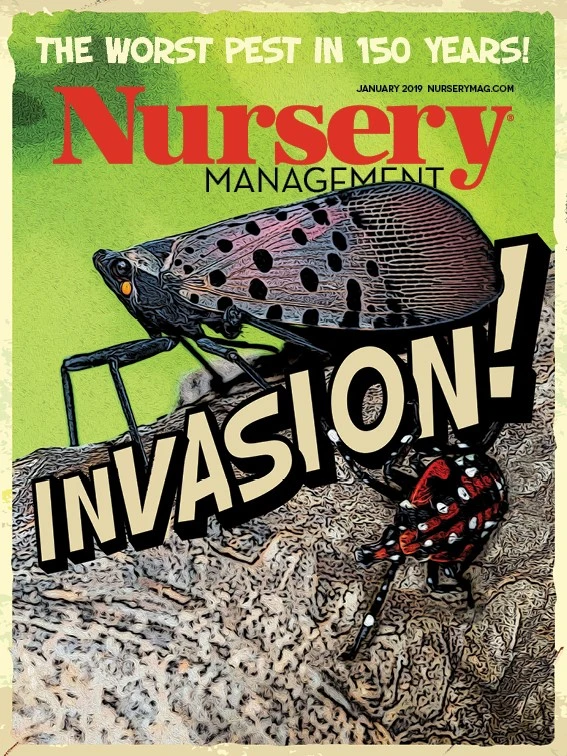
Explore the January 2019 Issue
Check out more from this issue and find your next story to read.
Latest from Nursery Management
- New book explores plants that thrive in Rocky Mountains
- American Floral Endowment establishes Herman Meinders Memorial Tribute
- These companies are utilizing plastic alternatives to reduce horticultural waste
- NewGen Boxwood added to Proven Winners ColorChoice line
- Terra Nova releases new echinacea variety, 'Fringe Festival'
- American Horticultural Society names winners of 2025 AHS Book Awards
- Nufarm announces unified brand
- American Horticultural Society announces winners of 2025 Great American Gardeners Awards
